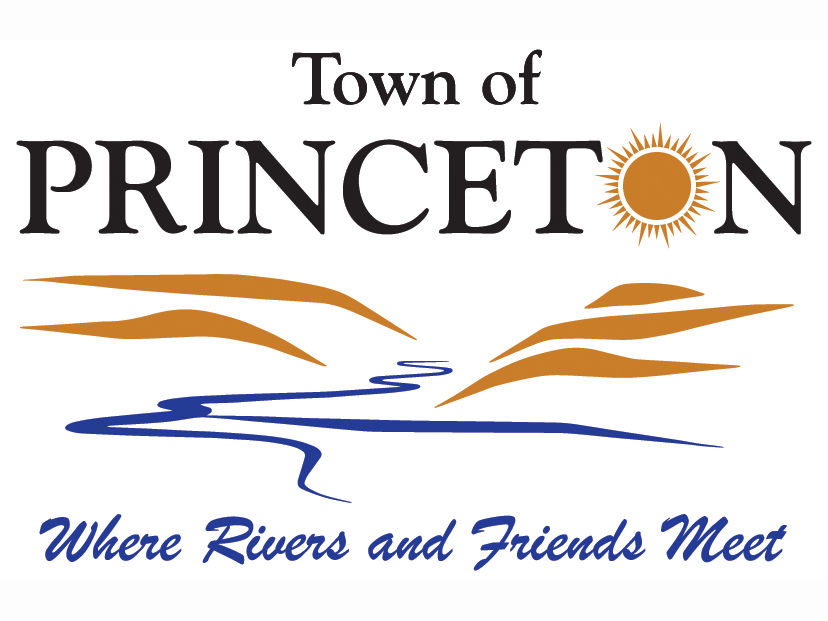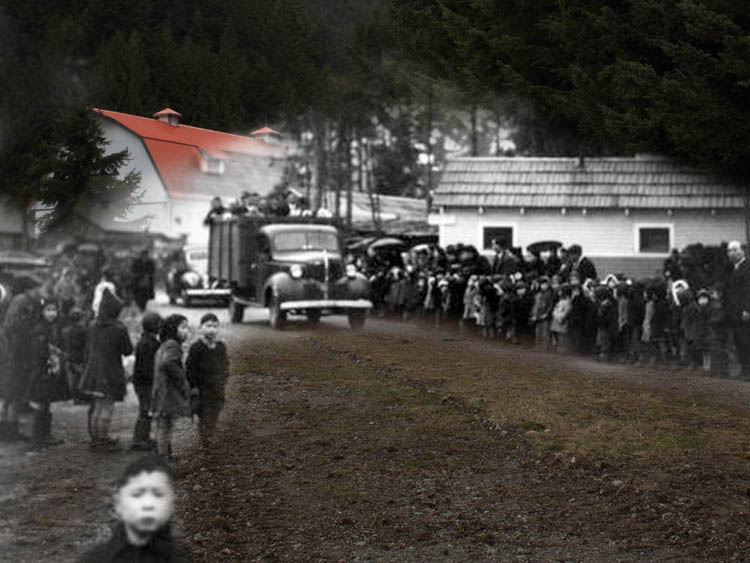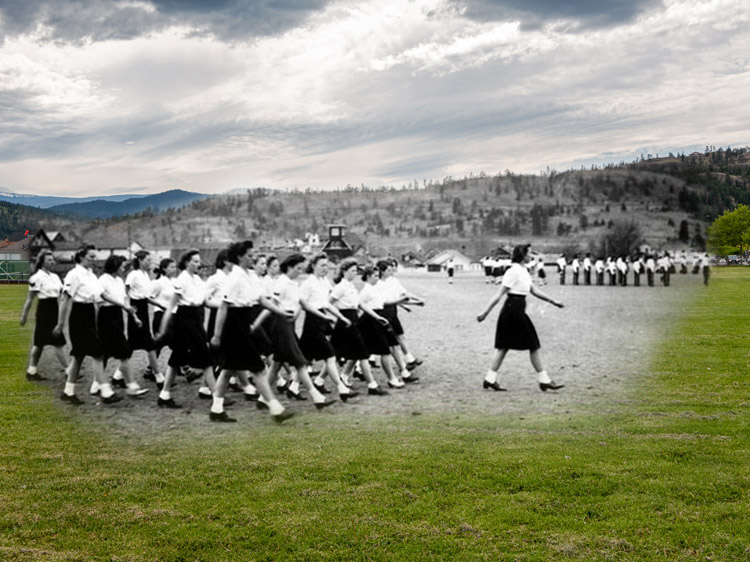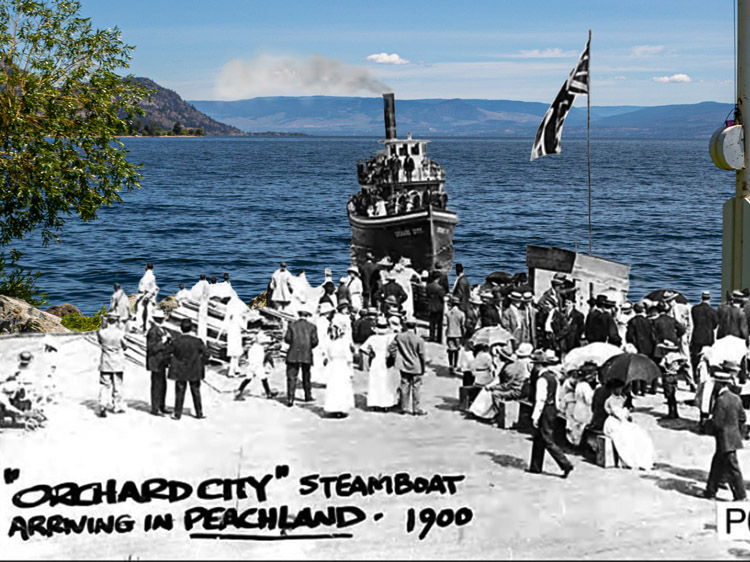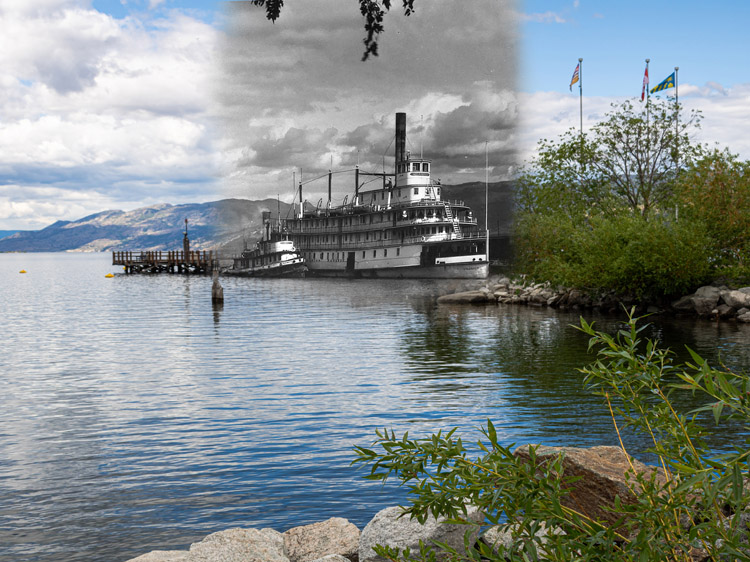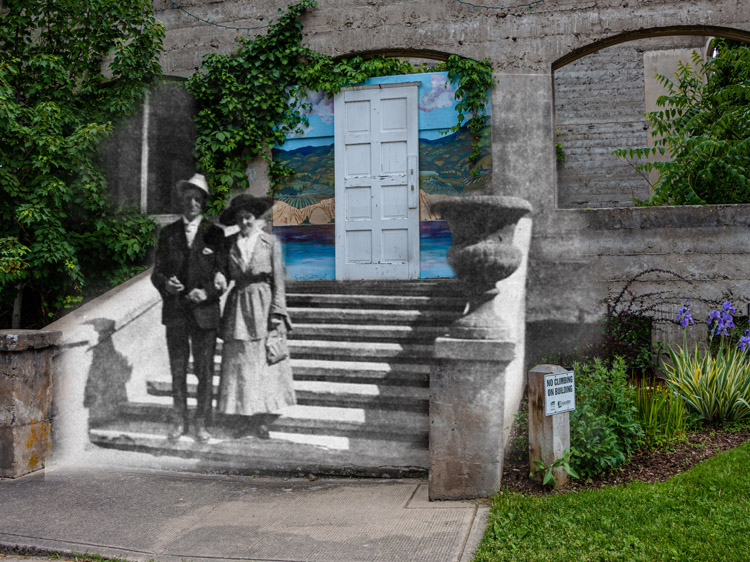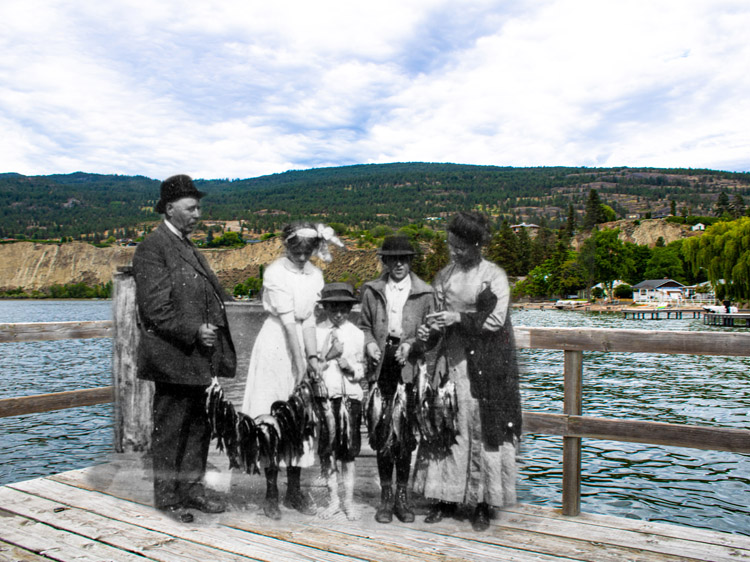In this tour we'll take a look at the bronze sculptures recently installed around downtown Princeton as part of the town's beautification plan. We'll learn about some of the animals you can find in the Princeton District.
This project is a partnership with the Town of Princeton and the Princeton & District Museum and Archives.
1. Elk (Cervus canadensis)
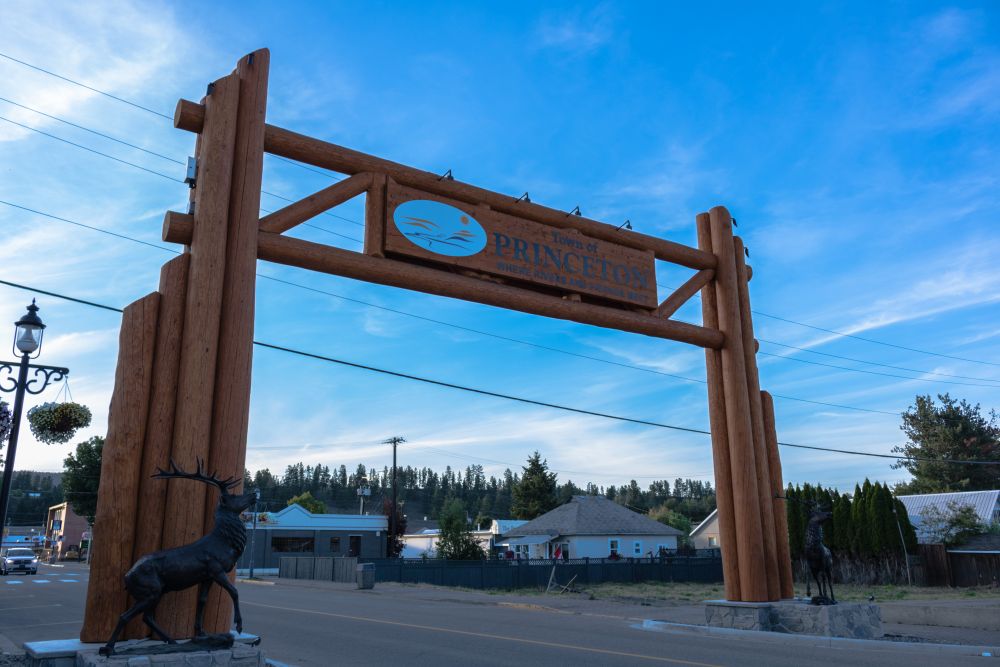
Two elk gracing the giant wooden archway welcome you to downtown Princeton and one of the main streets, Bridge Street. You will find elk in forest and forest-edge habitats where they feed on grasses, plants, leaves, and tree bark. Although elk are sometimes confused with moose, they can be easily identified as they have thick bodies with slender legs. Elk tails are also quite short. A female, or cow elk, can weigh between 375 and 640 pounds where the slightly larger male, or bull, can weigh between 390 and 1,100 pounds.
* * *
Fun Fact: Elk are one of the largest species within the deer family.
Local Interest: As you admire these elk sculptures and the wooden gateway, we remind you that you are just steps away from the Little Creek Grill, Princeton Outdoor Supply (where you can find out more about the local elk habitat), We Brew craft brewery, and many other services that dot the main street.
Depending on where you are visiting us from, you may know elk by their other common name: the wapiti.
2. Moose (Alces alces)

This moose welcomes you to the Princeton Visitor Centre. During normal business hours, you will be able to venture inside and find out more about the Princeton area, shop for local souvenirs, access public washrooms, and get directions to wherever you are going. The Princeton Visitor Centre also has electric car charging stations along the side of the building.
* * *
The moose is the largest and heaviest species in the deer family. An adult moose can stand between 4.5 feet and 7 feet tall. The female (cow) moose can weigh between 440 and 1,080 pounds where the largest male (bull) moose will top the scale at between 840 and 1,540 pounds. The habitat of the moose is boreal forests, and temperate broadleaf, and mixed forests. They eat primarily terrestrial and aquatic vegetation.
Fun Fact: Moose are easy to identify as they have very distinctive “open-hand” shaped antlers.
The moose, although large in stature, has several predators including bears, wolves, and humans.
3. The Mountain Man

Welcome to the centre of downtown Princeton! You are standing in what is known as Veteran’s Square, the home to our “signature” bronze sculpture. This is a piece called “The Mountain Man” which was designed and created by Frederic Remington in 1903. Remington, (October 4, 1861 - December 26, 1909) was an illustrator, painter, writer, and sculptor who lived in the Eastern United States. His works centered on the Western United States and Canadian cultural icons and featured cowboys, American Indians, and the US Cavalry. The Mountain Man is a trapper captured riding his horse down a steep mountain slope.
* * *
Fun Fact: Mountain Man was Remington’s 9th bronze sculpture.
Local Interest: From where you are standing, you can reach many local services ranging from Home Hardware and Century 21 to the Royal Canadian Legion, and the Leisure Inn Restaurant. You are also at the intersection of Princeton’s two main streets, Bridge Street and Vermilion Avenue.
If the name Remington sounds familiar to hunters and ranchers, that is because Frederic’s cousin founded the Remington Arms Company in 1816--one of the oldest gunmakers in North America.
4. Heron (Ardeidae)

Look up, look way up…perched atop the rock fountain in front of the Sunflower Gallery (a gift shop operated by the Princeton Community Arts Council featuring artwork from local artists) is a heron. These birds are very different from many of the other birds that can be found in the region. The heron has long legs, a long neck, and an impressive wingspan. These freshwater (and coastal) birds are not uncommon at several of the fishing lakes you can find just minutes from here along Highway 5A north to Merritt.
* * *
Herons eat a variety of live aquatic prey including fish, aquatic insects, mollusks, crustaceans, and amphibians. They are members of a bird family which contains 64 recognized species. Of these species of herons, some are called egrets or bitterns. The main difference between a heron and a stork or crane is that while in flight, the heron has its neck retracted, not outstretched.
Fun Fact: The neck of the heron can be kinked into an “s” shape thanks to the cervical vertebrae that have a modified shape.
Local Interest: The rock fountain where the heron sits was created by Princeton photographer, painter, artist, and sculptor Kazumi (Kaz) Tanaka who lives and works within view of this work of his.
5. The Professor

Called The Professor, this sculpture is by Gregory Johnson of Atlanta, Georgia. He was born in 1955, studied at the Art Institute of Chicago and is known for realist and abstract sculpture and painting, wildlife portrait busts, and torsos. The Professor is a wise old owl sitting on a stack of books. The logical placement for this sculpture is in front of the local library. To find the hours of the Princeton Branch of Okanagan Regional Library, look on the window.
* * *
The owl comes from a genus of birds that contains well over 200 different species with most of them being solitary and nocturnal birds. The owl is easy to identify as it has an upright stance, a large and broad head with binocular vision, binaural hearing, extremely sharp talons, and feathers that can produce silent flight which aids hunting.
Fun Fact: A group of owls is known as a parliament.
Local Interest: In addition to the local library, you are steps away from other unique services featured on the other main street of downtown Princeton: Vermilion Avenue. There is a local pawn shop and a chiropractic service as well as a hearing centre.
As owls are predators, they hunt mostly for small mammals, other birds, insects and excel at fishing.
6. Coyote (Canis latrans)

The coyote is a canine species that are smaller than the wolf, which happens to be a close relative. Coyotes are known to be versatile enough to adapt and expand into environments that have been altered by humans. There are 19 recognized subspecies of coyotes and the average female weighs between 15 and 40 pounds where the average male can weigh from 20 to 45 pounds. Although not quite as wily as depicted in cartoons, the coyote has played a significant role in First Nations folklore where he is known as a trickster.
* * *
The coyote diet is mostly made up of deer, hares, rabbits, birds, rodents, reptiles, fish, amphibians, invertebrates and on occasion, fruit and vegetables. Coyotes are not uncommonly sighted within town limits and can be heard with their distinctive howling sounds some nights in various parts of the community and surrounding area.
Fun Fact: Coyote tracks differ from dogs in that they are more elongated and have a less round shape to them.
Local Interest: You are standing outside of the Town of Princeton Municipal Hall. It was once the home to the British Columbia Provincial Police and the basement of the building still contains a cement jail cell. This historic building was also the Provincial Courthouse. Court sessions continue here monthly. The building behind the Town Hall is one of the oldest public buildings in Princeton. Originally St. Paul’s United Church, the building was completed in 1920. The hall behind the church was added in 1965.
Coyotes are light grey with black and white fur interspersed with grey. There are variations of this depending on geography.
7. Cougar (Puma concolor)

The cougar is from a cat subfamily and is the fourth largest cat species on Earth. The cougar is largely solitary by nature and although it is considered nocturnal, daytime sightings are not uncommon. Females can weigh between 65 and 140 pounds (30 to 53 kg) while males can be between 115 to 220 pounds (52 to 100 kg) and the cougar has the largest range of any wild land animal in North America. The only major threat to cougar populations is humans however, the cougar pursues a vast array of prey. Known as an ambush predator, the cougar diet consists of mostly ungulates with deer providing the greatest source of food. Rodents and insects are also part of the cougar diet.
* * *
Fun Fact: The cougar has several names including puma, mountain lion, panther, painter, and catamount.
Local Interest: Next to the cougar sculpture is the Copper Pit, one of Princeton’s many places to dine downtown. It is the perfect spot to meet friends and share a meal after a day out cross country skiing at China Ridge, or downhill skiing at Manning Park. During warmer months, this dining spot provides a welcome break from a day hiking the KVR trail or shopping in Princeton’s variety of unique shops and boutiques.
Cougars are territorial and do not live in large groups with individual home ranges depending on conditions that include available food sources, terrain, and vegetation.
8. Wolf (Canis lupus)

The wolf, or grey wolf, is a large canine of which there are over 30 recognized subspecies. The less pointed ears and muzzle, along with a shorter body and long tail make the wolf easy to distinguish from other members of the Canis species. Females can weigh around 80 pounds and males can be about 90 pounds. The wolf will travel as a family which normally consists of a mated pair and their offspring with the offspring eventually leaving to form their own pack. Wolves are territorial and fights over territory can result in the death of one of the combatants.
* * *
Fun Fact: The guard hairs of the wolf determine the colour of its coat. White, brown, black, and grey are typical colours found in the wolf coat.
Local Interest: The wolf sculptures you are viewing are located outside the Princeton Museum. If you are here during regular hours, please stop in and take a look at the fascinating history of Princeton and the Upper Similkameen Valley. You may find the displays on local ghost towns so interesting that you may plan to return to camp at Granite Creek or visit Tulameen and tan on the beach at Otter Lake.
Wolves have a varied diet for carnivores. They will feed on livestock, carrion, large wild hooved animals, smaller animals, and even garbage.
9. Fox (Canis vulpes)

Foxes belong to a family which also includes wolves, and jackals and can be found on every continent except for Antarctica. Of the foxes, the red fox is the most widespread of the species with close to 50 recognized subspecies. This also makes the red fox the most common of the foxes. Foxes have a vast vocal repertoire which includes barks, yelps, whines, growls, combative calls, and explosive calls.
* * *
Fun Fact: The gray fox is one of only two canine species that can climb trees.
Local Interest: From where you are standing, you should be able to see the historic Masonic Hall and behind it, the Princeton Volunteer Fire Department fire hall. Both groups have a long history of service to the community. Volunteer organizations are common in Princeton with several still active including the Princeton Curling Club (the rink is located on Highway 3 towards Vancouver) and the Princeton Golf Club (the 18-hole golf course is just East of Princeton on Highway 3).
Foxes are smaller than most other members of their family weighing between 10 and 20 pounds and the average lifespan of a fox in the wild is between one and three years but it is not uncommon for some to reach the age of 10 years.
10. Bears (Ursus)
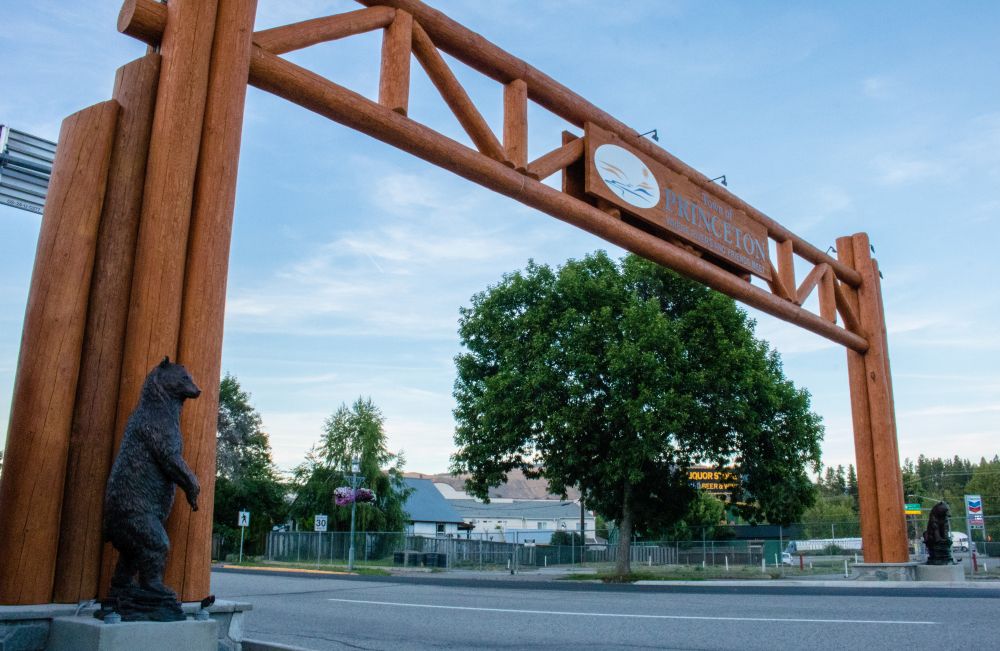
Welcome to downtown Princeton! You are at the largest of two wooden gateways to the downtown core (the other one is on Bridge Street). As you look down this road, named Vermilion Avenue, you will see a variety of services and shops with the majority of them owner-operated. Vermilion Avenue features everything from legal and healthcare services to restaurants, a museum, art gallery, library, and retail businesses such as the Field’s Store just a few steps away. At this archway, you will find two bears.
* * *
Bears are large mammals. There are just eight species of bears and they have an excellent sense of smell. Aside from their heavy build and unusual gait, bears are fast runners that can also climb and swim. Bears have few predators, one of which is humans. During the colder months of Winter, bears will hibernate which can last up to 100 days.
Fun Fact: Bears are typically opportunistic omnivores that eat more vegetation than meat.
Local Interest: Did you know that Princeton is home to a community-owned Junior B Hockey Club? The Posse plays out of Princeton Arena. The community also hosts a new adult Lacrosse team, the Rangers.
Since prehistoric times, the bear has been a source of meat and fur for clothing. Bears are also culturally significant to many different societies including the First Nations of the Upper Similkameen.
11. Eagle (Aquila)

The majority of large birds of prey from the same family are known as eagles. There are just two species of eagles native to North America and are characterized as large, powerfully built birds with heavy heads and beaks. Similar to other birds of prey, eagles have hooked beaks designed to rip and they have strong, muscular legs with extremely powerful talons. In addition, eagles have powerful eyes that enable them to spot prey from a fair distance.
* * *
Fun Fact: While the lion is considered the “King of Beasts” the eagle is the “King of Birds.”
Local Interest: From here you should be surrounded by dining options ranging from the Brown Bridge Pub and Billy’s Family Restaurant to Subway. Thinking of spending the night and exploring the area a bit more extensively tomorrow? You have a few choices for accommodations including the Villager Motel and Canadas Best Value Inn - both within walking distance of the sculpture you are currently viewing. For more options for places to stay, stop by the Princeton Visitors Centre for details. It’s down on Bridge Street with the moose sculpture out front.
Eagles play a significant role in folklore, particularly in First Nations culture.
12. Nesting Eagle

Eagles typically build their nests in tall trees or on high cliffs. It is not uncommon to see an eagle next at the top of a very large and tall telephone pole. The nests are called eyries and normally there are just two eggs laid. The older, larger chick will kill its younger sibling after it hatches. The parents will not intervene and the stronger chick will be raised as the only offspring of the eagle pair.
* * *
Fun Fact: The dominant chick in a set of two chicks will normally be a female as they tend to be larger than the male hatchling.
Local Interest: This park alongside the Tulameen River is called Bridgeview Park. That’s because it gives you a great view of the historic wooden bridge over the Tulameen River. There aren’t many of these types of bridges left so be sure to snap a selfie with this one before you leave. While you’re at it, don’t forget to check out the businesses located at this end of Bridge Street. You can grab a coffee and snack at Tomasina’s, fill up on groceries at Save-On-Foods, visit the Loonie Bin (a dollar store with a bakery), or any of the other great services and shops that fill the downtown core.
Eagle species have different wingspan, body mass, and overall size. Eagles that are native to forests are smaller with shorter wingspans to navigate through treed areas. The eagles that live in the open country have a larger wingspan and are expert soarers as a result.
















